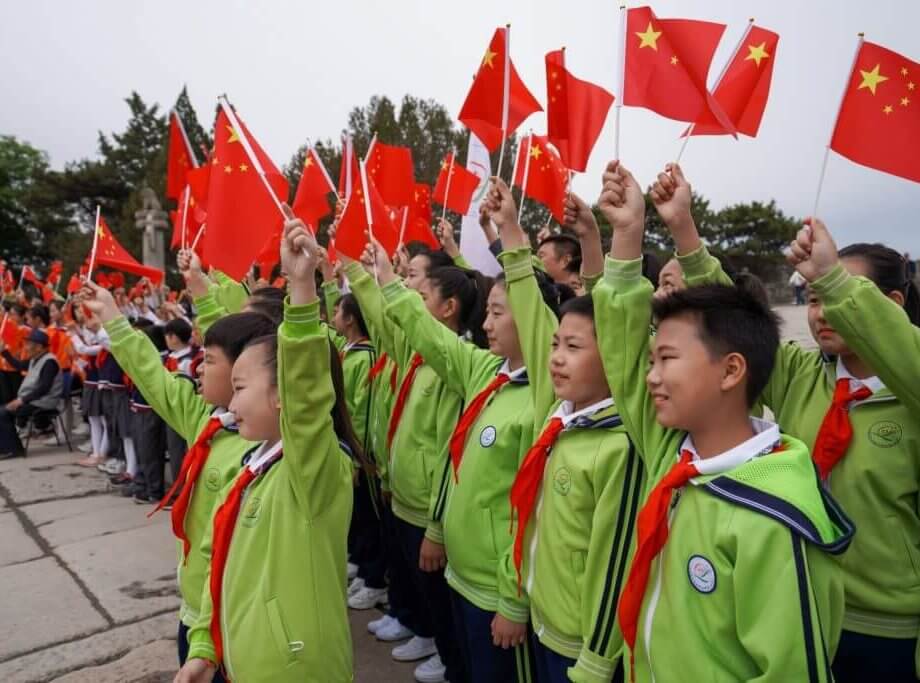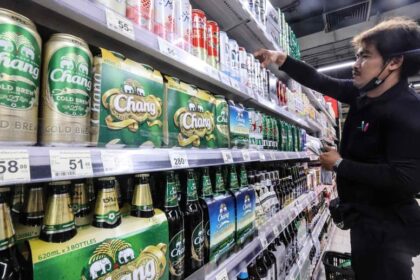Beijing’s Bold Move: Making AI Education Mandatory in Schools
In a landmark policy shift, Beijing is set to introduce mandatory artificial intelligence (AI) education across all primary and secondary schools starting from the autumn semester of 2025. This initiative, announced by the Beijing Municipal Education Commission, requires every student aged 6 to 18 to receive at least eight hours of AI instruction per academic year. The move is part of China’s broader strategy to cement its position as a global leader in AI technology and innovation, reflecting both national ambitions and the rapidly evolving demands of the digital age.
- Beijing’s Bold Move: Making AI Education Mandatory in Schools
- What Will Students Learn? Structure and Content of the AI Curriculum
- Why Now? The Strategic Importance of Early AI Education
- How Does Beijing’s Initiative Compare Globally?
- Implementation Challenges: Teacher Training, Content, and Equity
- Public and Expert Reactions: Support, Skepticism, and Debate
- Broader Implications: Economic, Social, and Global Impact
- Looking Ahead: The Future of AI Education in China
- In Summary
The new curriculum, outlined in the 2025 edition of the Curriculum Outline for Artificial Intelligence Education in Primary and Secondary Schools in Beijing (Trial), is designed to provide students with foundational knowledge, practical skills, and ethical awareness related to AI. Schools have the flexibility to offer AI as a stand-alone subject or integrate it into existing courses such as information technology, science, and general technology. This flexibility is intended to accommodate varying resources and teaching capacities across Beijing’s diverse educational landscape.
What Will Students Learn? Structure and Content of the AI Curriculum
The AI curriculum is structured to evolve with students’ cognitive and developmental stages, ensuring age-appropriate content and learning experiences. The curriculum focuses on three core areas:
- AI Awareness and Cognitive Abilities: Introducing basic concepts and fostering curiosity about AI.
- AI Applications and Innovation Capabilities: Teaching practical uses of AI and encouraging creative problem-solving.
- Ethics and Social Responsibility: Instilling an understanding of the societal impacts and ethical considerations of AI.
For primary school students (ages 6-12), the emphasis is on hands-on, experiential learning. Activities might include simple programming exercises, interactive games, and basic introductions to how AI is used in everyday life. The goal is to spark interest and lay a foundation for more advanced study.
In junior high school, students delve deeper into the principles of AI, exploring how data, algorithms, and computing power interact. They learn to apply AI concepts to real-world scenarios, such as using AI tools for school projects or understanding how recommendation systems work on social media platforms.
At the senior high school level, the curriculum shifts towards advanced applications, innovation, and critical analysis. Students are encouraged to engage in creative projects, explore the limitations and potential of AI technologies like machine learning and deep learning, and consider the strategic role of AI in China’s development.
Assessment and Integration: How Will AI Education Be Delivered?
Schools can choose to deliver AI education as dedicated courses or weave it into existing subjects. The curriculum outline emphasizes the importance of integrated design to avoid redundancy and ensure a seamless learning experience. For example, AI concepts might be taught alongside computer science, mathematics, or even in practical activities like robotics clubs and STEM workshops.
Assessment of students’ AI skills will be multifaceted, including knowledge tests, project presentations, work exhibitions, and thematic debates. Electronic learning portfolios will track students’ progress, achievements, and skill development in real time. Importantly, AI application skills will be included in students’ comprehensive quality assessments, reflecting the subject’s growing importance in the overall educational framework.
Why Now? The Strategic Importance of Early AI Education
China’s decision to mandate AI education is not occurring in a vacuum. The country has long harbored ambitions to lead in AI innovation, and recent developments have only intensified this drive. Earlier in 2025, Chinese AI startup DeepSeek made international headlines by releasing a model that rivals those of major US companies, but with significantly lower resource requirements. This breakthrough underscored China’s growing prowess in the field and highlighted the need for a workforce equipped with advanced AI skills.
Minister of Education Huai Jinpeng has described AI as a driving force behind a new technological revolution, presenting both opportunities and challenges for education. On the sidelines of the National People’s Congress, Huai announced plans to release a white paper on AI education in 2025, signaling the government’s commitment to strategic, long-term planning in this area.
By embedding AI literacy into the foundational stages of learning, Beijing aims to cultivate a generation that is not only proficient in using AI tools but also capable of contributing to their development. This approach aligns with China’s broader goals of technological sovereignty, economic growth, and global competitiveness.
How Does Beijing’s Initiative Compare Globally?
Beijing’s move to make AI education mandatory is part of a growing international trend, but it stands out for its scale and ambition. In 2023, California passed a law requiring its education board to incorporate AI literacy into school curricula, and Italy has begun testing AI-powered tools in classrooms. However, in many countries, AI education remains optional or limited to pilot programs.
The United Nations has also recognized the importance of AI in education, dedicating the International Day of Education 2025 to the theme of AI’s transformative potential. The global conversation increasingly centers on how to equip young people with the skills needed to thrive in an AI-driven world, reduce educational inequality, and bridge the digital divide.
Beijing’s policy is unique in its mandatory nature and comprehensive integration across all school levels. By requiring at least eight hours of AI instruction per year for every student, the city is setting a precedent that could influence educational reforms worldwide.
Implementation Challenges: Teacher Training, Content, and Equity
While the policy is ambitious, its success will depend on effective implementation. One major challenge is the shortage of qualified teachers with expertise in AI. Training educators to deliver age-appropriate, engaging, and accurate AI content is a complex task, especially given the rapid pace of technological change.
Another concern is the adequacy of the curriculum. Some critics argue that eight hours per year may be insufficient for deep learning, potentially resulting in only a superficial understanding of AI concepts. Tailoring content to suit the wide age range of students—from early primary to late high school—requires innovative curriculum design and adaptive teaching methods.
Balancing standardization with flexibility is also crucial. While a uniform curriculum ensures consistent exposure to AI, schools across Beijing vary widely in resources and student needs. The policy’s flexibility in allowing integration with existing subjects is intended to address this, but ongoing support and resource allocation will be necessary to ensure equitable access and quality.
Leveraging Local Resources and Industry Partnerships
To support the rollout, Beijing plans to leverage its rich technological ecosystem, including universities, research institutes, and high-tech companies. The establishment of AI labs, experience centers, and exhibition halls will provide students with opportunities to engage with AI firsthand. Collaborations with industry partners are expected to keep the curriculum relevant and aligned with the latest technological advancements.
Public and Expert Reactions: Support, Skepticism, and Debate
The announcement of mandatory AI education has sparked lively debate among educators, parents, and the broader public. Many have welcomed the policy as a forward-thinking step that will give Chinese students a competitive edge in the global tech landscape. On social media platforms like Weibo, supporters praise the initiative for preparing youth for the jobs of the future and maintaining China’s technological leadership.
However, concerns have also been raised about the potential for increased academic pressure on students, who already face rigorous workloads. Some parents worry about the impact on children’s well-being and question whether schools have the capacity to deliver high-quality AI education. Teachers have expressed apprehension about the availability of training and resources, while some experts caution that the curriculum must remain adaptable to keep pace with rapid developments in AI.
Internationally, reactions are mixed. Some observers see Beijing’s policy as a model for other countries, while others question whether mandatory instruction can truly foster creativity and critical thinking, or if it risks becoming a superficial box-ticking exercise. The debate highlights the broader challenges of integrating cutting-edge technology into traditional education systems.
Broader Implications: Economic, Social, and Global Impact
The economic implications of Beijing’s AI education initiative are significant. By developing a generation of AI-literate citizens, China is building a talent pipeline that can drive innovation, productivity, and economic growth. This aligns with the country’s ambition to lead in the global AI race and reduce reliance on foreign technology.
Socially, the policy has the potential to democratize access to powerful technological tools, helping to bridge educational gaps and promote digital inclusion. By familiarizing students with AI from an early age, Beijing is fostering a culture of innovation and critical thinking that could transform traditional learning paradigms and professional landscapes.
On the global stage, China’s proactive approach to AI education positions it as a trendsetter. As other countries grapple with how to prepare their youth for an AI-driven future, Beijing’s model may serve as both an inspiration and a challenge, prompting further investment and reform in tech education worldwide.
Looking Ahead: The Future of AI Education in China
The rollout of mandatory AI education in Beijing is just the beginning. The upcoming release of a national white paper on AI education in 2025 is expected to provide further guidance on strategic policies, goals, and methodologies for integrating AI into China’s education system. This document will likely address issues such as curriculum development, teacher training, resource allocation, and industry collaboration.
As the program evolves, ongoing evaluation and adaptation will be essential to ensure that AI education remains relevant, effective, and accessible to all students. The success of Beijing’s initiative could pave the way for similar reforms across China and beyond, shaping the future of education in an increasingly AI-centric world.
In Summary
- Beijing will mandate at least eight hours of AI education per year for all primary and secondary students starting in the fall of 2025.
- The curriculum covers AI awareness, practical applications, and ethics, with content tailored to different age groups.
- Schools can offer AI as a stand-alone subject or integrate it into existing courses, with flexibility to adapt to local resources.
- Assessment will include knowledge tests, projects, and electronic portfolios, with AI skills factored into comprehensive student evaluations.
- The initiative aligns with China’s broader ambitions to lead in AI technology and innovation, and reflects global trends in tech education.
- Challenges include teacher training, curriculum adequacy, and ensuring equitable access across diverse schools.
- Public and expert reactions are mixed, with support for the policy’s vision but concerns about implementation and student pressure.
- Beijing’s approach may serve as a model for other countries as the world adapts to the demands of an AI-driven future.












